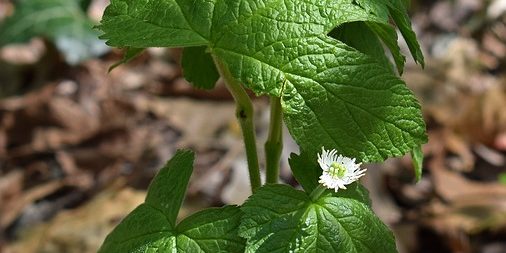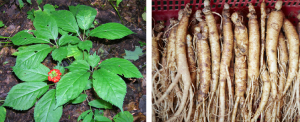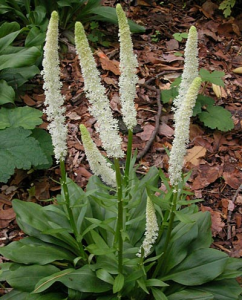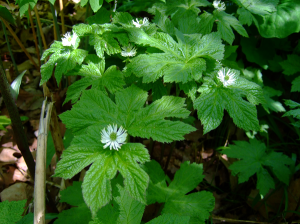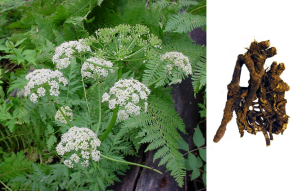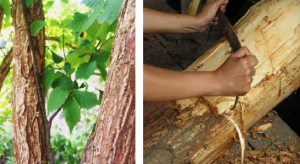North America is rich in native medicinal herbs. Unfortunately, due to unwise and unsustainable harvesting, a number of these plants are at risk in their own native habitats. Some are easily cultivated for medicinal use. Others, like Lady’s Slipper and Beth Root, are not cultivated at all and should be replaced with other herbs for the same condition. In this article we will look at five herbs that are considered at risk but may be available from sustainable sources. We will also suggest possible substitute herbs that are easy to find and easy to grow for cultivation. It is essential that we educate ourselves in the sources of our medicinal herbs to protect our native treasures for future generations.
American Ginseng
Panax quinquefolius
Native to: Eastern United States and Canada, Deciduous Woodlands
Uses: Fatigue, immune issues, sexual vitality, metabolic function
Sustainable sources? Yes. Purchase only Cultivated (not wild or wild-crafted) American Ginseng, preferably grown in its native region
Replace With: Asian Ginseng, Dang Shen
False Unicorn Root
Chamaelirium luteum
Native to: Shady moist woods, New York to Florida and West to the Mississippi. Most common in the Carolinas and further south.
Uses: Uterine Tonic, Hormonal balance for Menstruation and menopause, miscarriage prevention, fertility tonic
Sustainable sources? Some, look for manufacturers with a sustainability pledge. Purchase Cultivated, rather than wild-crafted
Replace With: Vitex, Black Coshosh, Dong Quai
Goldenseal
Hydrastis canadensis
Native to: Shaded areas of hardwood forests, Eastern United states
Uses: Antibiotic, Liver/Bile stimulant, Anti-inflammatory
Sustainable sources? Some. Goldenseal can be challenging to grow commercially. Be sure to only purchase cultivated, never wild Goldenseal, and use substitutions when you can
Replace with: Barberry, Turmeric (for liver concerns), or Garlic, Oregano, Echinacea (for infections)
Osha
Ligusticum porteri
Native to: Rocky Mountains, Montana to Mexico
Uses: Lung and Heart Tonic, respiratory infections, sore throat
Sustainable sources? Very Few. Best to only use it when necessary until more techniques are found for commercial cultivation
Replace With: Elecampane (lung tonic), Echinacea (for infections), Ginger (digestive tonic)
Slippery Elm
Ulmus rubra
Native to: The Eastern U. S. It has a broad range east of the Rockies
Uses: Mucilaginous; treats coughs, colds, ulcers, heartburn and any hot, irritated or inflamed skin
Sustainable sources? Some. Look for organically grown rather than wild harvested
Replace with: Marshmallow Root, Licorice Root, Oats, Flax

